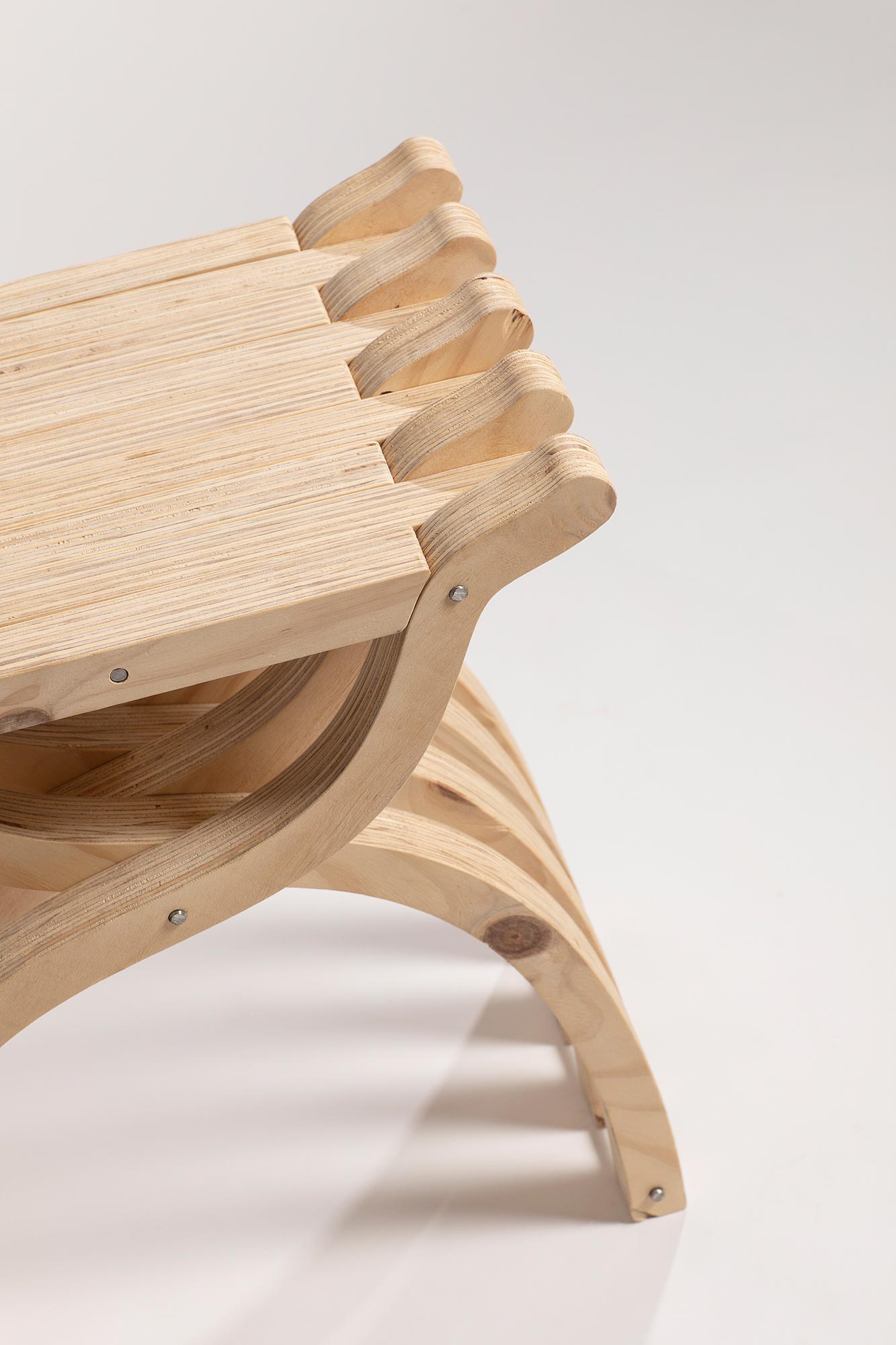Savonarola Collection















Design & Production/ Bygg Architecture & Design: Raphaël Coutin, Ivo Hulskamp
Special thanks to Corradino Garofalo
Year/ 2022
Status/ built
Client/ Springplank
This collection is a response to a very practical problem and is inspired by a childhood memory.We designed the furniture as part of the coffee place: Bakkie 040 on Strijp-S, Eindhoven.
The materials at our disposal for the interior work and the furniture were the leftover from an exhibition: Timber wood and pine plywood, ideal for building and plating interior walls. Once the large pieces were cut to size we ended up with a workshop full of cut out and smaller pieces difficult use. A good trick for using leftovers is to make small 'standard' parts out of them, thanks to our CNC we could cut all the parts for our chairs from the pieces lying around the workshop.
As a kid, Raphael remembers his father always reading from an antique chair, dark wood sculpted with two lion's heads on the armrest. Strangely fordable, they looked like a portable throne, giving you a straight and alert posture while seated.
The design originated in ancient Rome, the X-shaped chair, used by lords on the battlefield or at the colosseum, sometimes inlaid with ivory or metal, with leather seats or cushions. Over the century the design has been transformed in many ways, from a 4 legs chair to multiple wooden slats overlapping but always keeping their ornaments.
This chair took several names, Curule - Dante chair - Luther chair, and in the 19th century Savonarola chair. The name was given from the 15th-century Italian Dominican priest Girolamo Savonarola. Savonarola preached against the excesses of people, denounced clerical corruption and luxurious lifestyle, predicted the Last Days and he organized bonfires to publicly burn thousands of items. Ironically his name was given to a thing that he hated the most a chair full of ornaments, a symbol of social status and luxury.
Here we are playing with this history, designing a Savonarola chair, naked of ornaments, giving a lord's posture to every user. Democratizing its social status while removing the feudal symbolism in the ornament. Is it a statement? Probably not, but we like putting it down there!
The materials at our disposal for the interior work and the furniture were the leftover from an exhibition: Timber wood and pine plywood, ideal for building and plating interior walls. Once the large pieces were cut to size we ended up with a workshop full of cut out and smaller pieces difficult use. A good trick for using leftovers is to make small 'standard' parts out of them, thanks to our CNC we could cut all the parts for our chairs from the pieces lying around the workshop.
As a kid, Raphael remembers his father always reading from an antique chair, dark wood sculpted with two lion's heads on the armrest. Strangely fordable, they looked like a portable throne, giving you a straight and alert posture while seated.
The design originated in ancient Rome, the X-shaped chair, used by lords on the battlefield or at the colosseum, sometimes inlaid with ivory or metal, with leather seats or cushions. Over the century the design has been transformed in many ways, from a 4 legs chair to multiple wooden slats overlapping but always keeping their ornaments.
This chair took several names, Curule - Dante chair - Luther chair, and in the 19th century Savonarola chair. The name was given from the 15th-century Italian Dominican priest Girolamo Savonarola. Savonarola preached against the excesses of people, denounced clerical corruption and luxurious lifestyle, predicted the Last Days and he organized bonfires to publicly burn thousands of items. Ironically his name was given to a thing that he hated the most a chair full of ornaments, a symbol of social status and luxury.
Here we are playing with this history, designing a Savonarola chair, naked of ornaments, giving a lord's posture to every user. Democratizing its social status while removing the feudal symbolism in the ornament. Is it a statement? Probably not, but we like putting it down there!